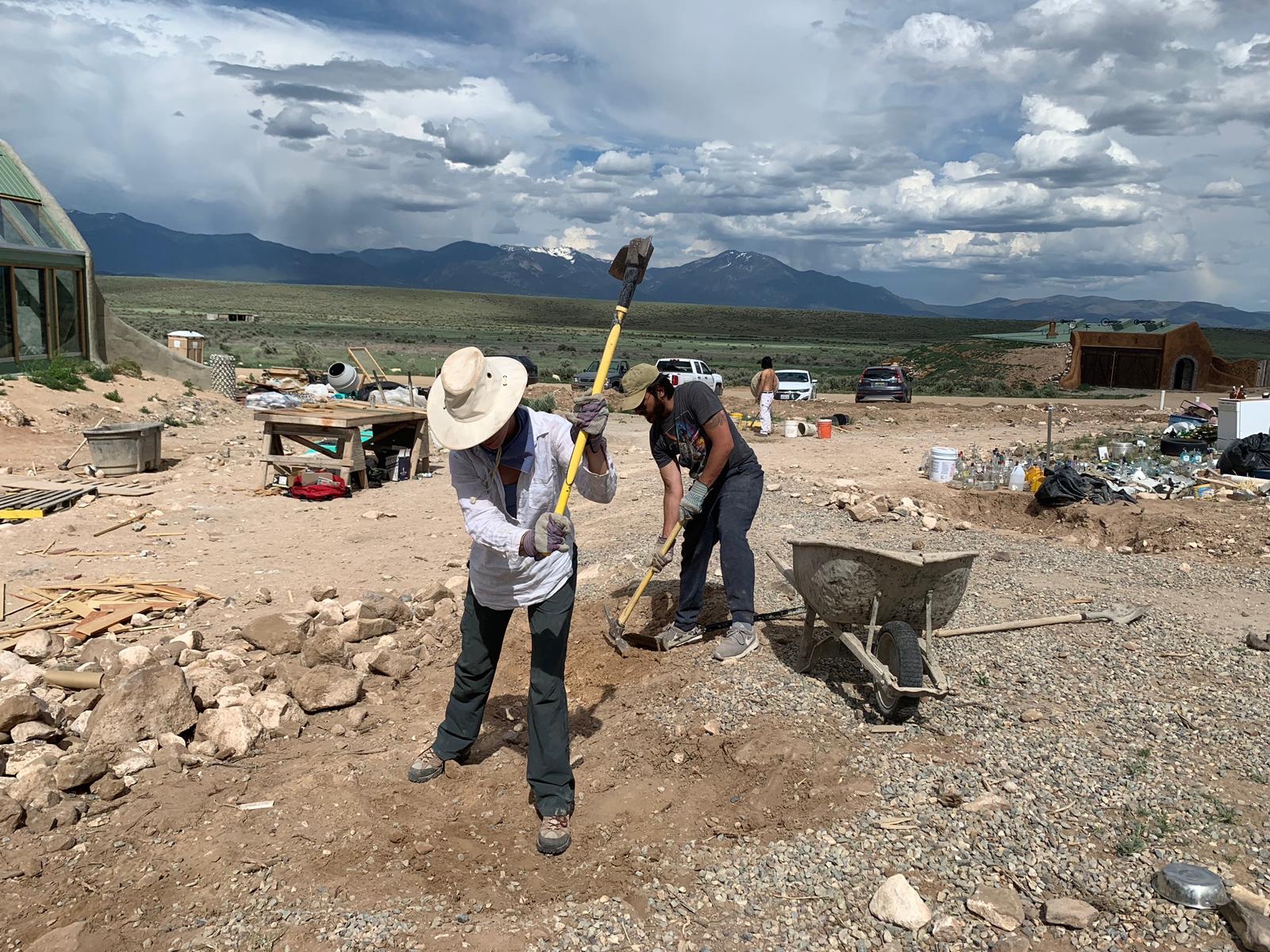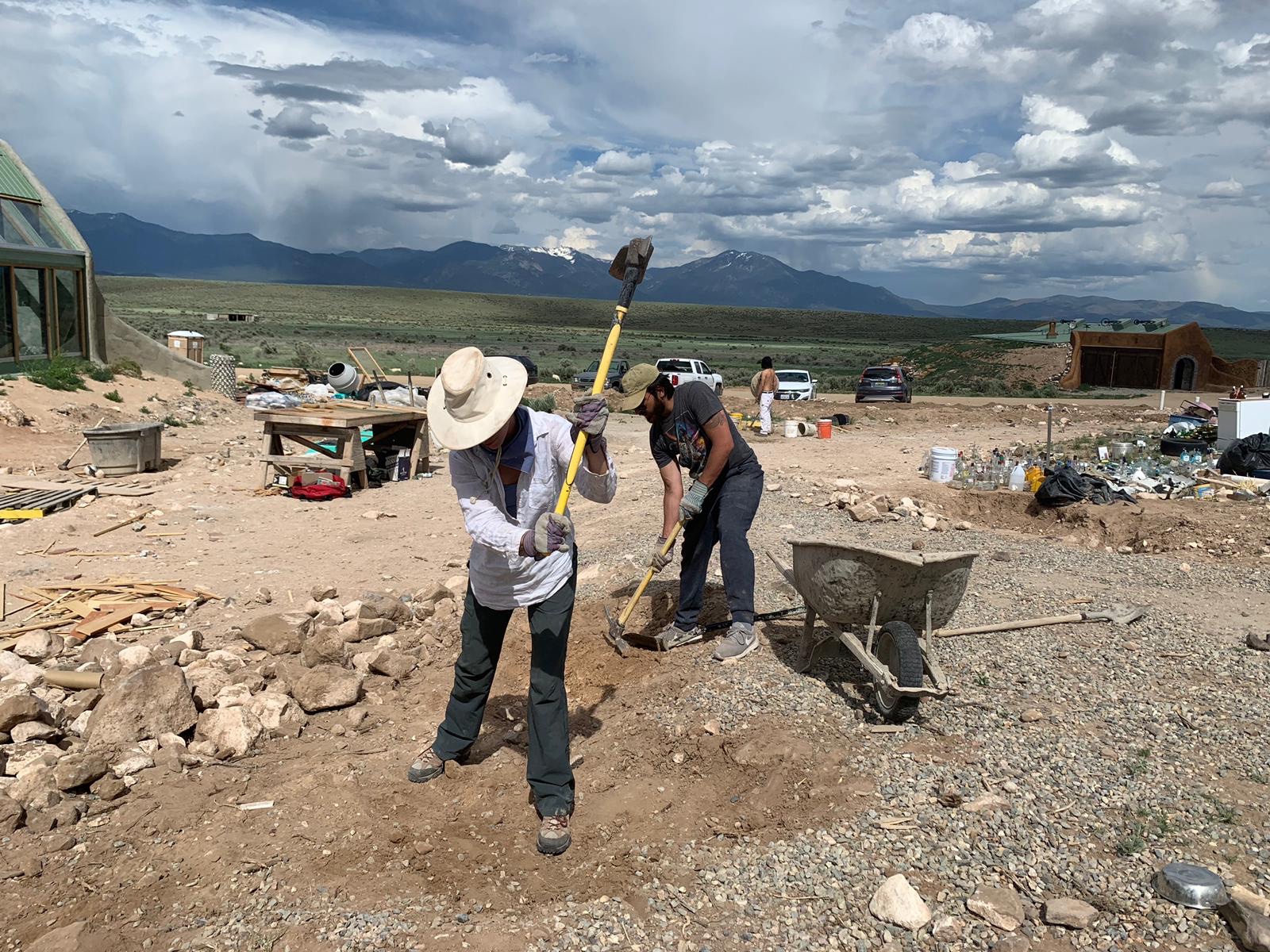While the big car companies are battling it out to be first to market in the the autonomous driving vehicle movement, an environment-friendly company in Taos, NM has been working on the autonomous house for almost 50 years, becoming a top eco-construction and self-sufficient living company in the world.
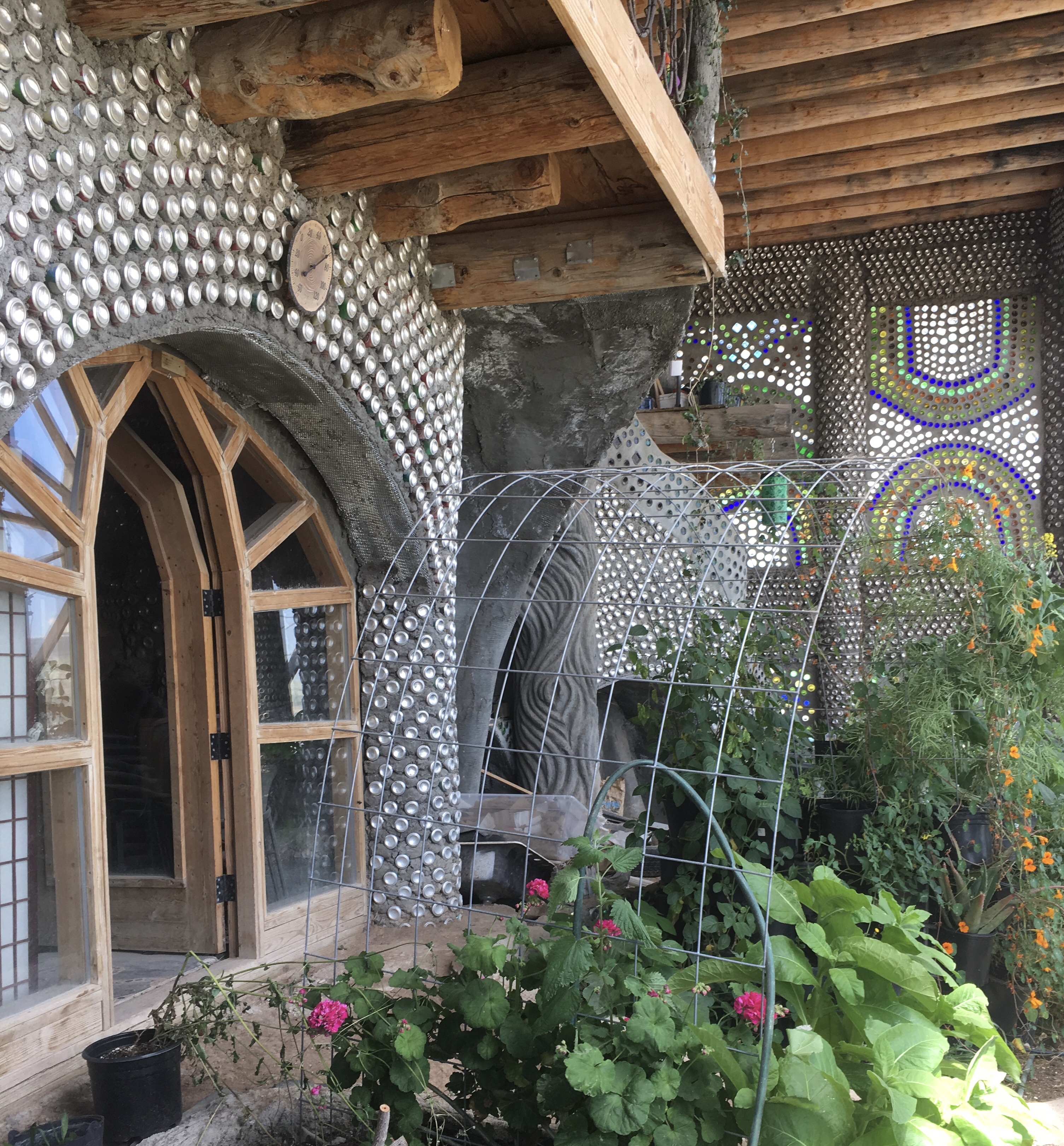
According to Biotecture pioneer Michael Reynolds, there are 6 human needs for a harmonious life on earth … Food, Energy, Clean Water, Shelter, Garbage management and Sewage Treatment. His Earthships are the manifestation of sustainable living design. Our family architecture major is spending the summer learning how to build them at the Earthship Academy in the creative, high desert, high mountain community of Taos in northern New Mexico.
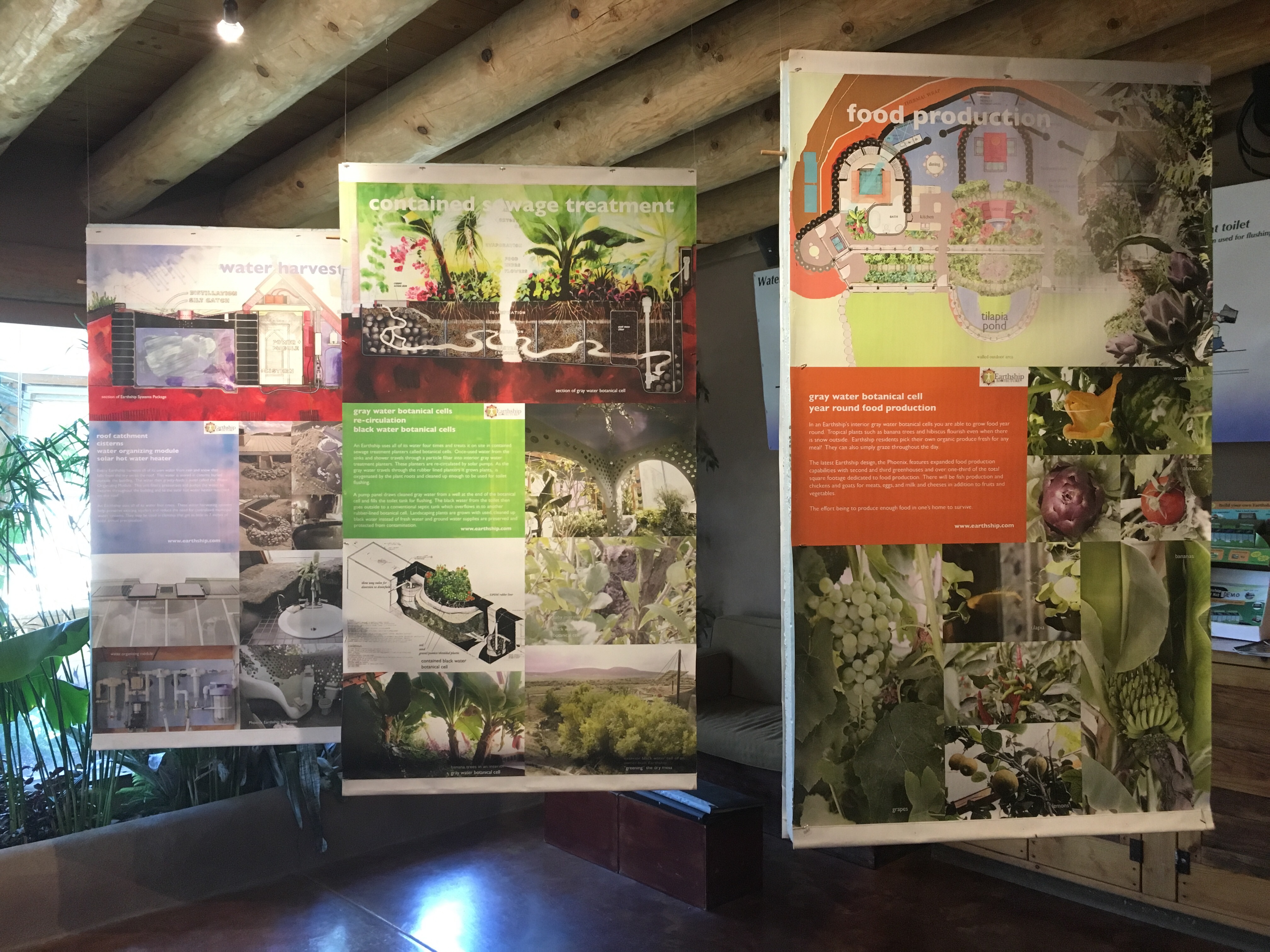
We travelled 120 miles north of Albuquerque to understand what this innovative concept was all about. Starting in the Visitor Center, our own private tour guide/builder gave us an overview of Earthships biotecture, going over each of the 6 human needs and how they are addressed in design, construction and everyday living. Then she took us to jobsites to see various stages of projects. The engineer in the family was most fascinated with the water recycling system, ’cause ain’t no nobody in the house happy when the water is off.
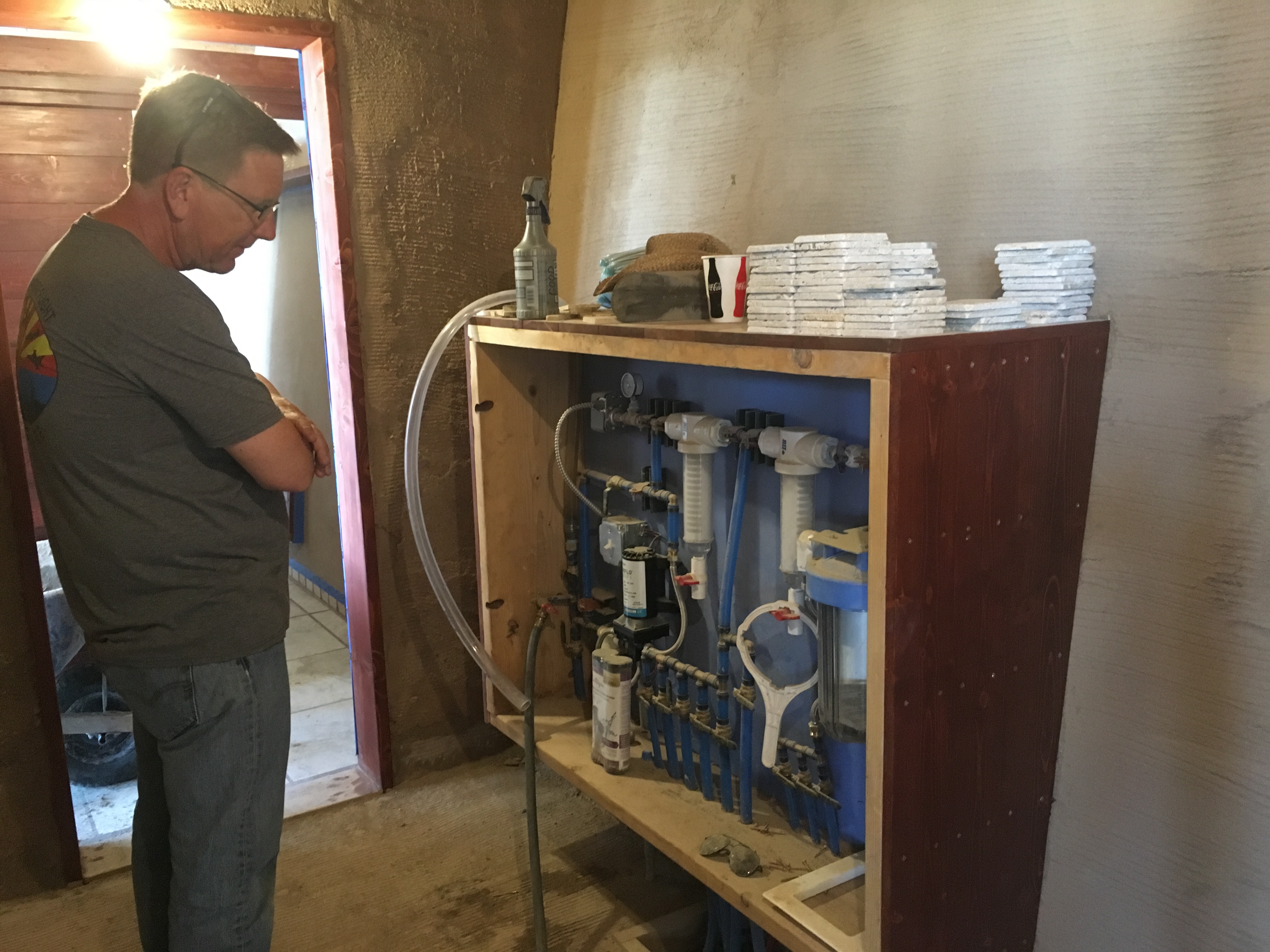
The ‘Tiny House’ movement is fun to watch on TV but they never seem to address where they get their water from and where it goes when used. As RV’ers, we are well aware of the difference between a ‘full-hookup’ site and when we are boondocking on BLM. Boondocking is great, but it only lasts until the tanks are full or the water runs out. It was impressive to see the thought that went into the mechanicals of the Earthship. Unlike the Tiny House that works best when parked behind your parent’s house so you can use their electric and water, the Earthship is truly self-sufficient.
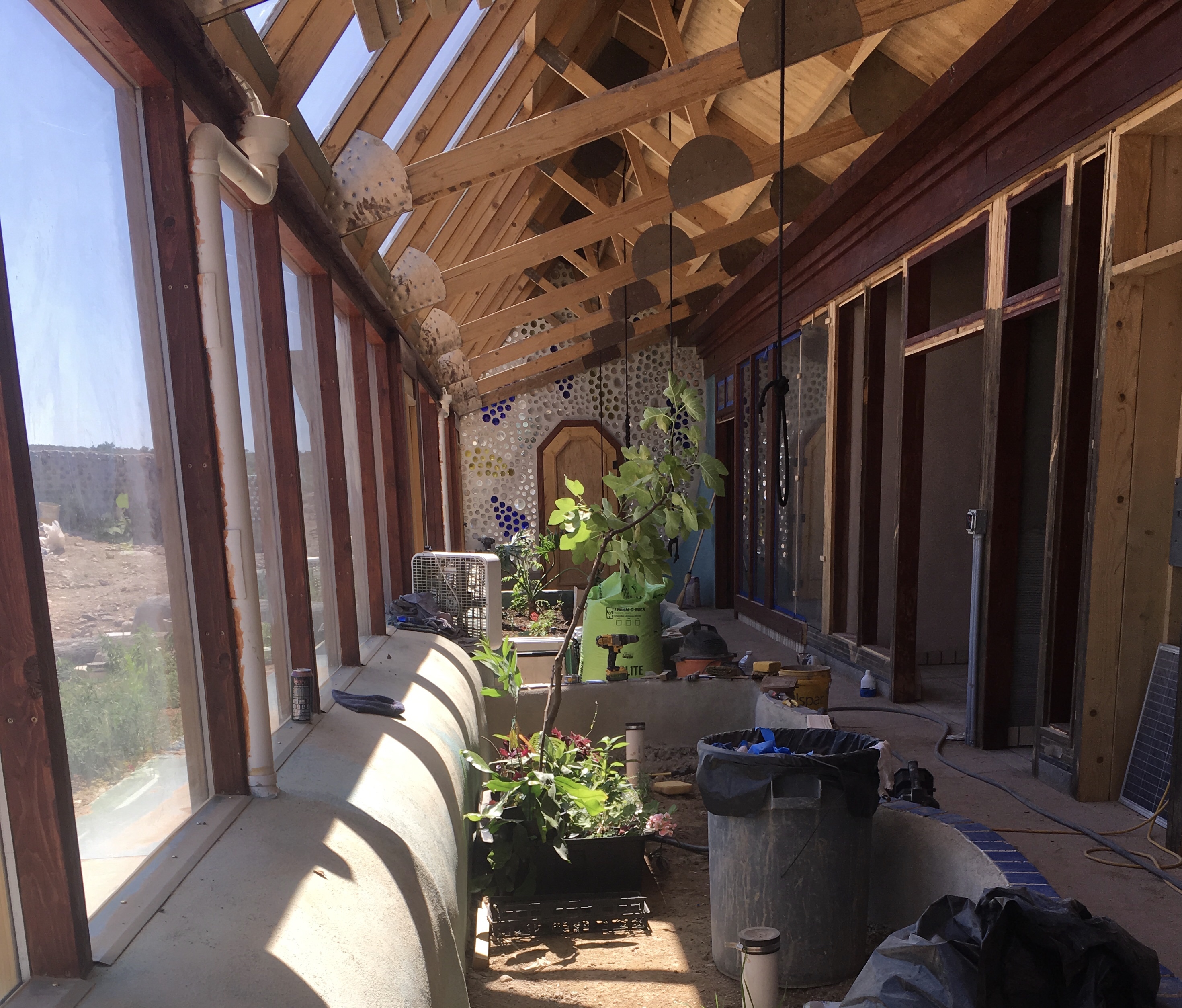
Surprisingly, this high desert gets plenty of rain to keep the homes’ cisterns full using the rooftop rain catchment system. The lush large working garden in the front of the home is doing triple duty processing the grey water, cleaning the air, and providing food, giving the place an almost tropical feel in sharp contrast to the desert surroundings.
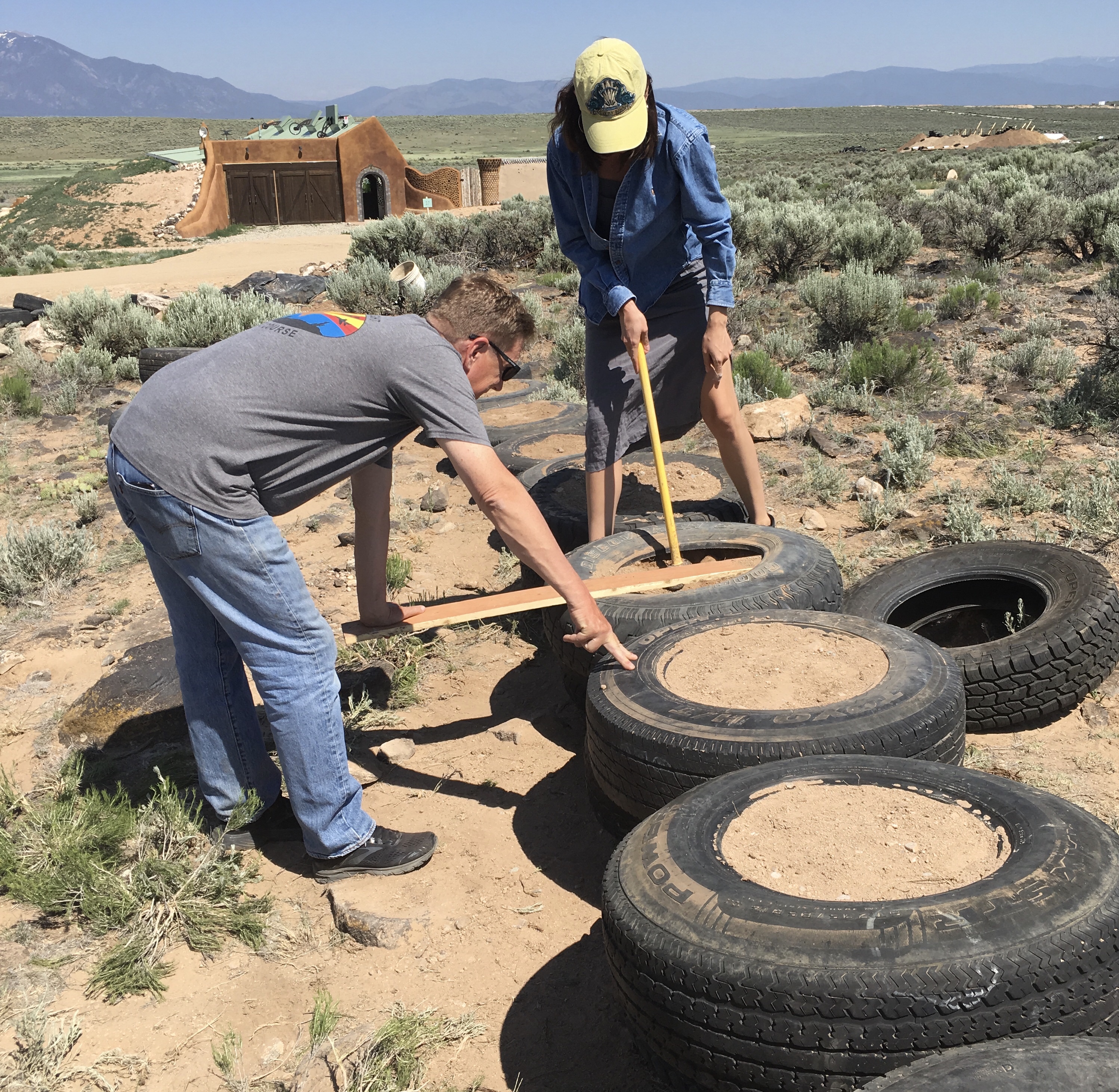
Before anything else gets built, tires that would normally go to the landfill are recycled by packing them with clay that is excavated from the job site and used as the foundation for the home. These tires are stacked to form retaining walls that are equivalent to foundation walls in a house. There are dozens of floor plans to choose from, such as the multi-family with in-law and au pair suites, or the single 500 sq ft survival model shown below. One thing they all have in common is a wall of windows on the southern exposure. The sun is your utility company.
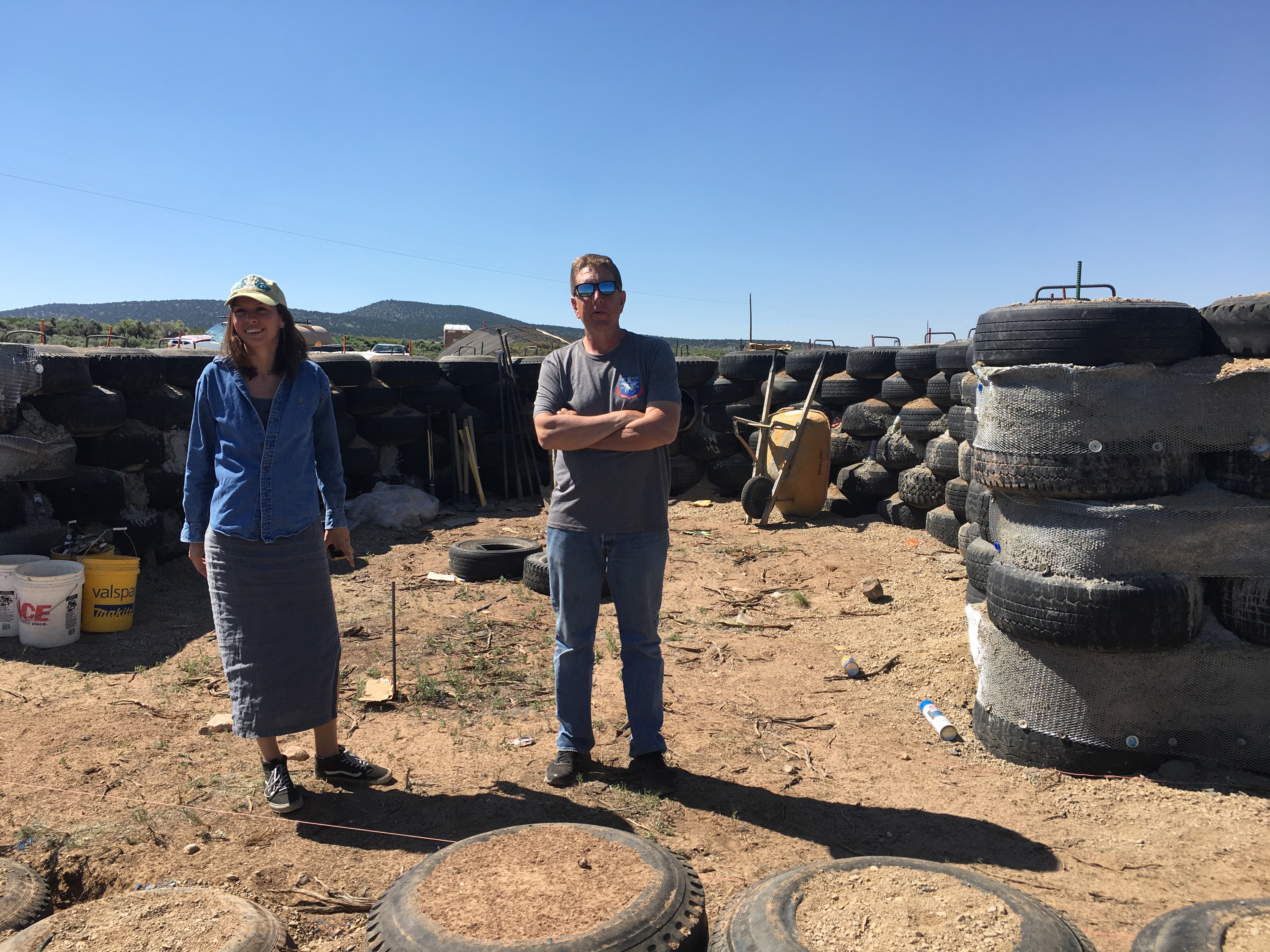
This foundation will be capped off with a rebar and mesh structure then covered in adobe – a mixture of clay, sand, water and straw. There’s no wolf blowing this house down.
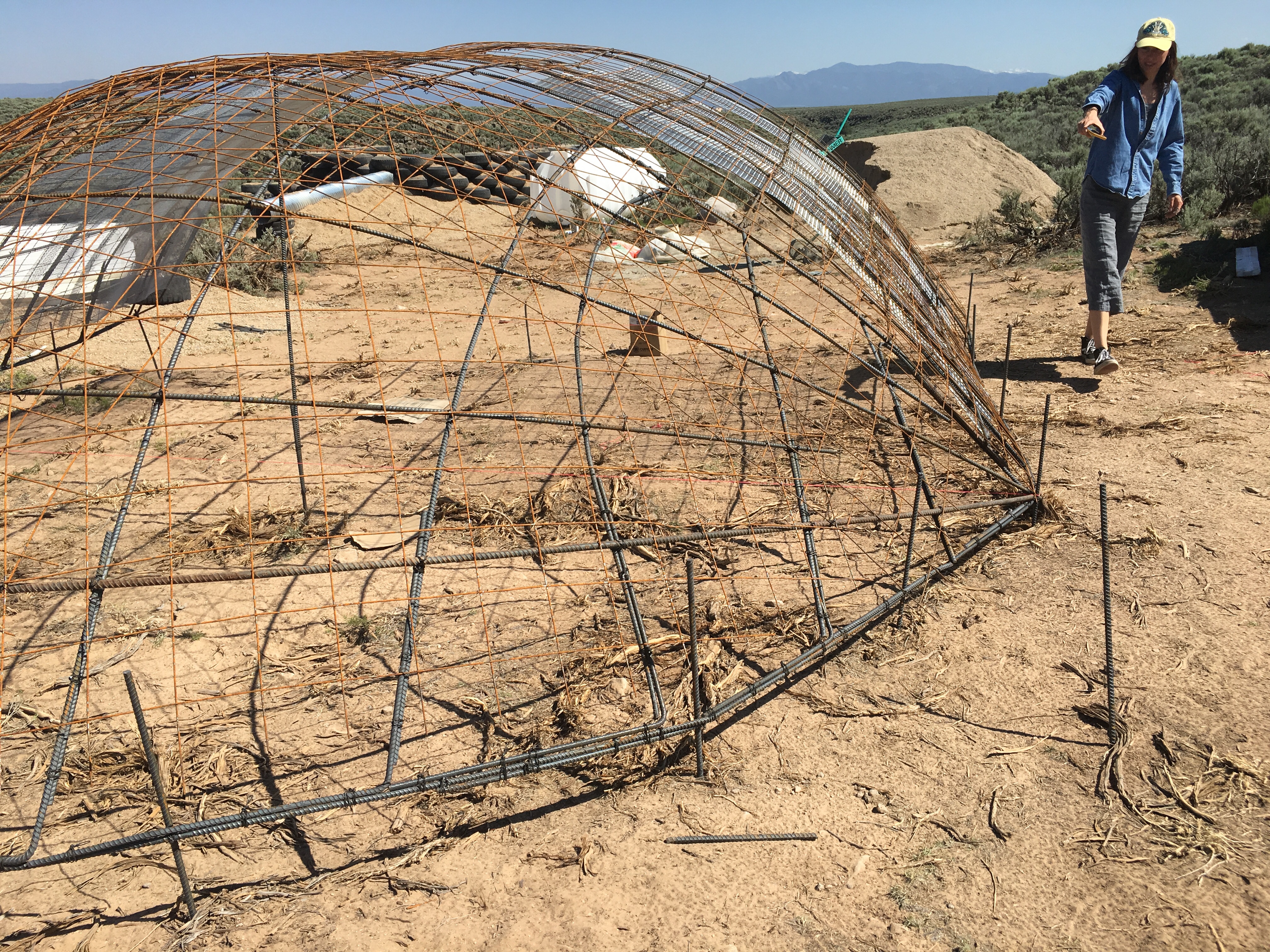
In the wild and beautiful Taos valley, these homes look natural tucked into the fields of juniper bushes. The high privacy walls provide protection from the wind which seems to always be blowing. The new student center below shows a work in progress. The privacy wall in the lower left is built from tires and recycled glass bottles and will be covered in adobe.
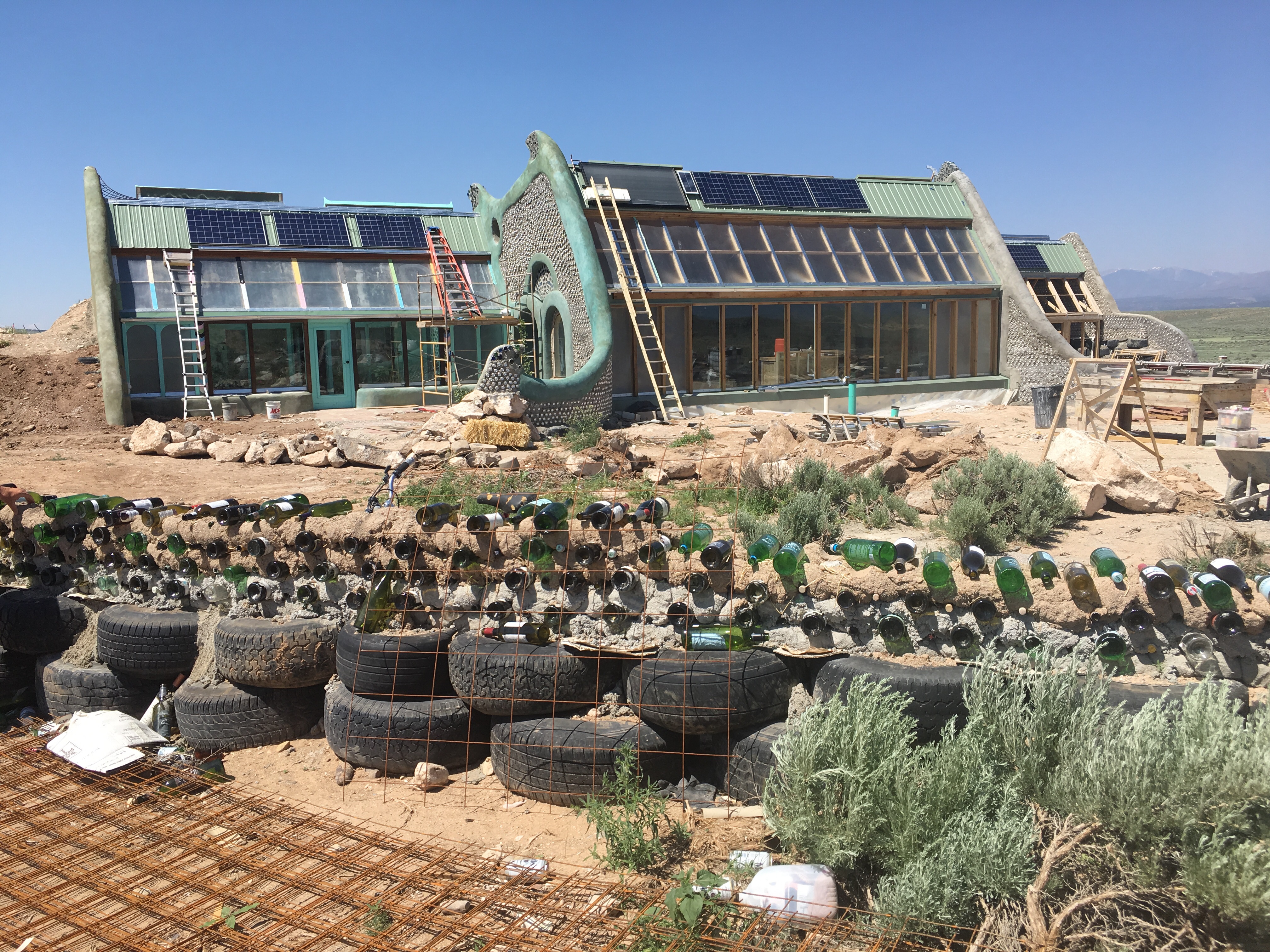
If it’s not cool enough to be building these eco homes, students live in them as well. This early model they call “The Hive” was build as a communal living space in the 80s.
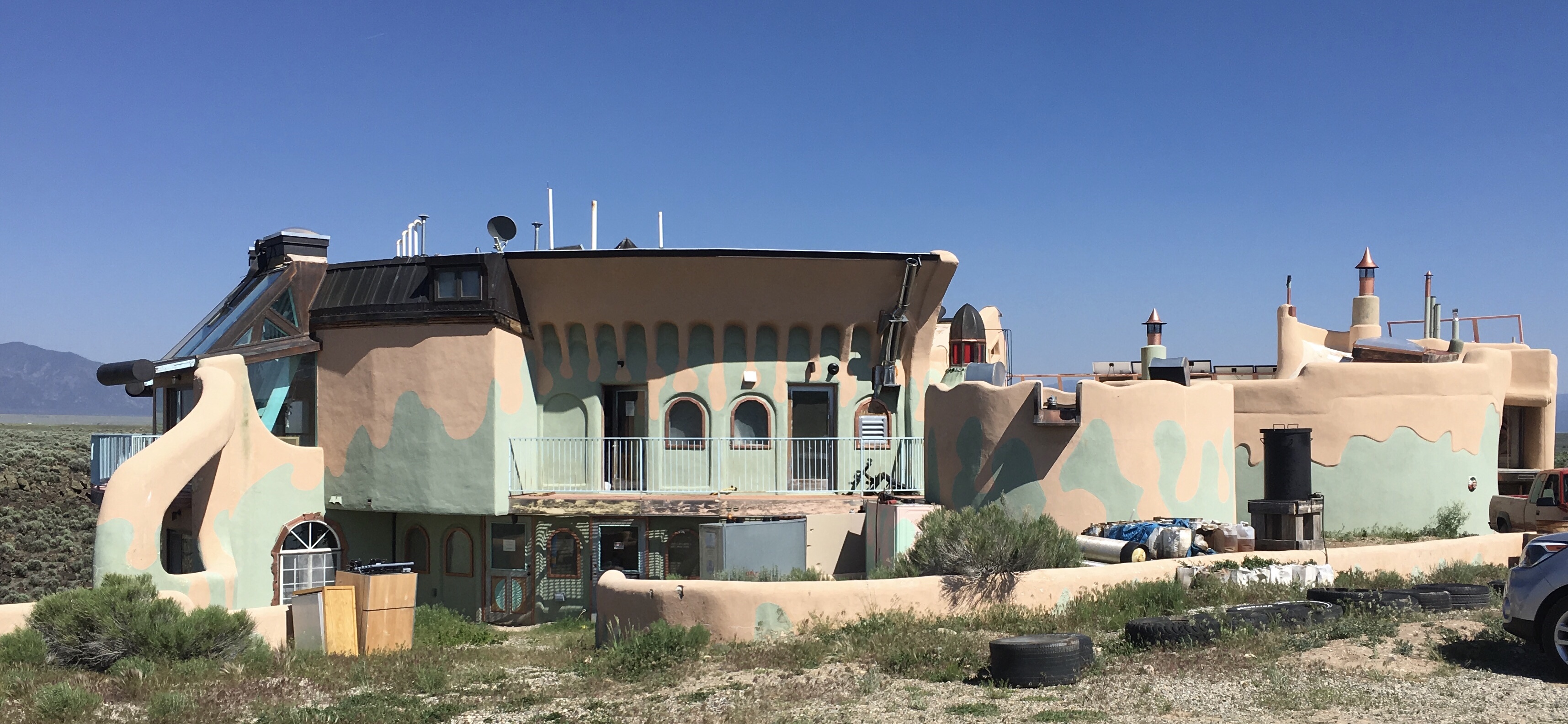
Eleven students are living in this fully off-grid home, each with a private bedroom and shared bath and living spaces.
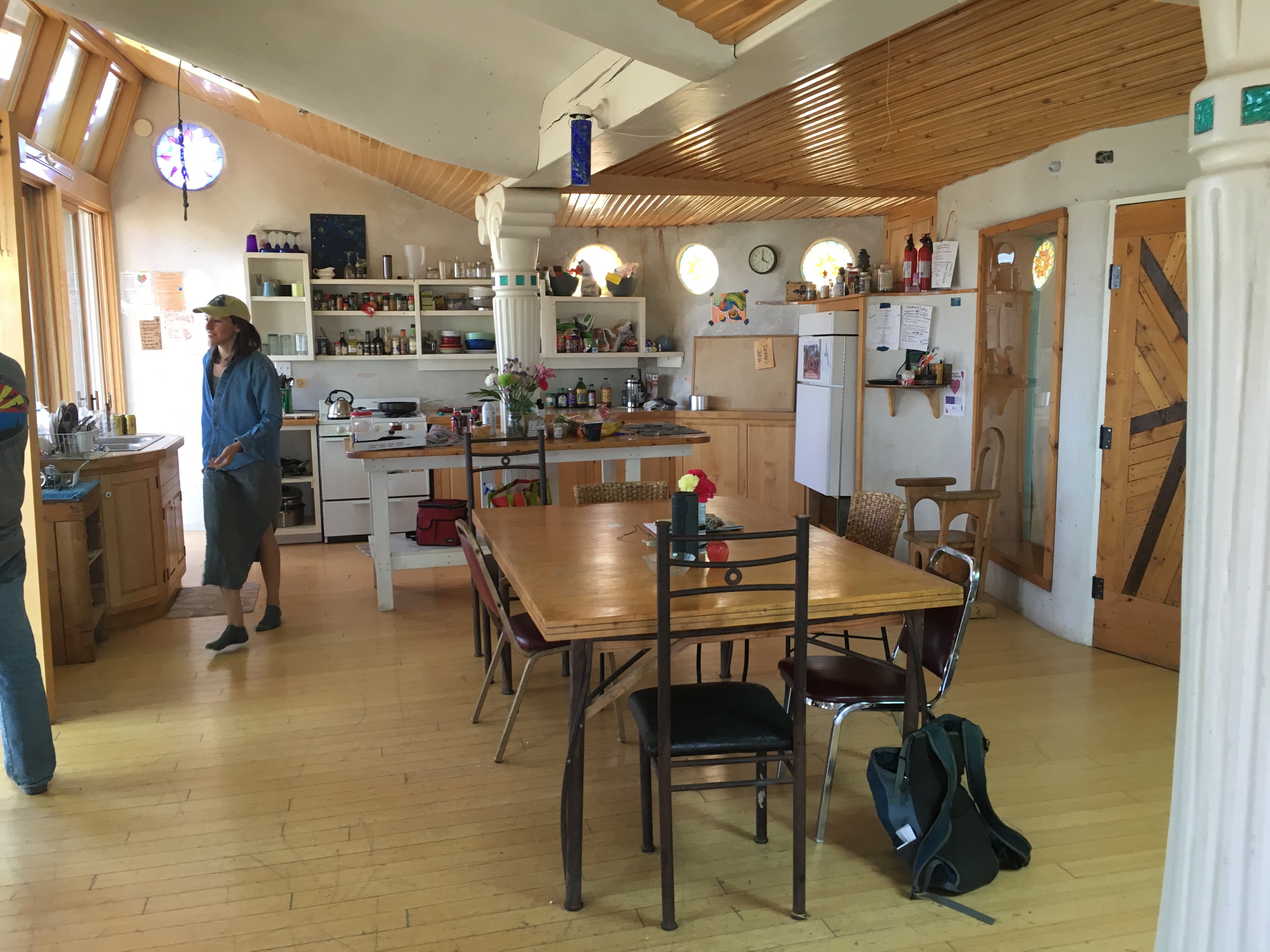
At the end of the tour we watched a movie about the Earthship movement and its global reach. Check out their website to learn more about their poverty relief work, how to stay in an Earthship AirBnB and professional explanations about the autonomous home! Earthship Biotecture
